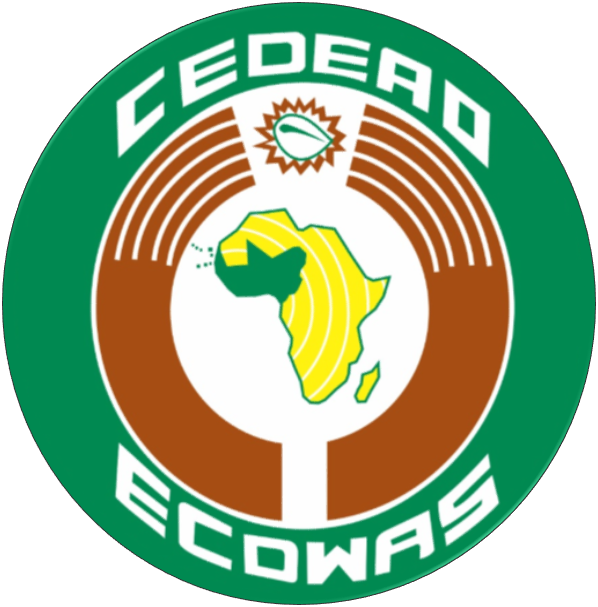ECOWAS Integrated Maritime Strategy (EIMS)

Download Pdf: ECOWAS INTEGRATED MARITIME STRATEGY
ECOWAS INTEGRATED MARITIME STRATEGY (EIMS)
- The Economic Community of West African States(ECOWAS) maritime domain (EMD) comprises the adjacent Atlantic Ocean, islands, estuaries, lagoons, archipelagos, deltas, wetlands, creeks, coral reefs, mangrove forests, sandy beaches and dunes, as well as inland waterways such as lakes, rivers, falls, dams and streams, which are the lifeblood of the Community. Collectively 11 of the 15 ECOWAS Member States have a 2,868 nautical mile coastline on the Atlantic Ocean – a vast and diverse region that stretches from the sandy deserts of northern Senegal bordering Mauritania to the north, in the Niger Delta region and bordering Cameroon and Equatorial Guinea to the East. Although Cape Verde is the only island ECOWAS Member State, all of ECOWAS is affected by or dependent upon the maritime domain.
2. The associated maritime ecosystem provides a rich biodiversity, fresh water from inland rivers and lakes, as well as the bounty of the Atlantic Ocean. This ecosystem provides critical life-supporting activities for a majority of the West African population, most of whom depend on it directly or indirectly for their survival, whether through employment, trade, transport, arts and culture, and aqua-farming or as a primary source of protein. The fishing industry provides employment to millions West Africans and significant export revenue to the region’s economy.
- All ECOWAS Member States are thus linked to the region’s maritime resources. These include the three landlocked countries (Burkina Faso, Mali and Niger), that are linked by maritime inland waterways, lakes and rivers. Six countries share the Niger River (the longest in the region), namely Nigeria, Niger, Mali, Guinea, Côte d’Ivoire and Benin. In addition, the landlocked countries need access to the sea for the import and export of goods. For a number of ECOWAS countries, resources from the EMD, which include oil and gas exploration, account for most of their foreign earnings.
- West African countries, either individually or collectively, are confronted with growing and multifaceted challenges to their maritime domain. The main concerns relate to overexploitation of marine resources, rapid degradation of the marine environment through pollution, coastal erosion, and rise in sea level criminal acts at sea. Piracy, armed robbery at sea, smuggling, drug and human trafficking, IUU fishing and illegal migration also has links to transnational criminal groups. The lack of security and safety of maritime navigation in the ECOWAS waters has made sea-transportation more risky, expensive and deadly.
- These challenges impede the realisation of the full potential of the EMD, undermine efforts aimed at accelerating economic development and integration in the region, and thus aggravate poverty and political instability.
- In 2008, Member States adopted the ECOWAS Vision 2020, which set out the strategic objectives of the Community for a borderless region, sustainable development, peace and good governance, and integration into the global market, as well as its transformation from an ‘ECOWAS of States’ to an ‘ECOWAS of People’. The challenges in the maritime domain seriously undermine efforts aimed at realising the objectives of the ECOWAS Vision 2020 and the goals of the July 1993 revised ECOWAS Treaty (Revised Treaty). Indeed, given the maritime domain’s critical role in development and in achieving the fundamental ideals of the Community, the challenges represent a foremost priority for the 15 ECOWAS Member States. It is also evident that the region will not fully achieve its Millennium Development Goals (MDGs) if urgent measures are not undertaken at the national and regional level to mitigate the fast-developing threats to the maritime domain.
- Effective measures will depend on the extent to which ECOWAS Member States are willing and able to harness regional resources, work together to enhance the effectiveness of individual States, and work in close cooperation with all stakeholders. This should include key actors at the continental and international level, and must complement individual and collective intervention in the maritime domain. The EIMS and Implementation Plan should stop and reverse these negative trends in the maritime domain and set out common standards to regulate and streamline related activities.
- The trans-boundary nature of maritime resources such as rivers, lakes, seas, minerals, oil and other maritime ecosystems makes regional cooperation imperative due to common experiences with violent conflicts over the control, distribution and management of the associated resources.
Mandate and legal basis for the EIMS
- The Revised Treaty provides a firm basis for the development of a regional maritime strategy as it addresses, amongst others, IUU (Illegal, Unreported and Unregulated) fishing, extractive activities, protection of the natural environment, and co-operation in the event of natural disasters.
- The development of the EIMS additionally responds to the commitments made by ECOWAS Member States in several regional, continental and international legal instruments. (See Annex A)
Integrated Approach
- The EIMS emphasises a people-centric response to the management and exploitation of the maritime domain and supports the shift from ‘an ECOWAS of States to an ECOWAS of people’. In this context, the EIMS is predicated on inter-agency collaboration at the national level and must bring together political affairs, legal matters, regional security and defence, law enforcement (police, gendarmerie, intelligence, investigation), maritime administration, and port authority, early warning/observation and monitoring and response, agriculture, environment, water resources, customs, industry, fisheries, strategic planning, transport and telecommunication, energy, trade, research and statistics, free movement of people, multilateral surveillance, employment and drug control, humanitarian and social affairs, human resources and development, gender, youth and civil society organisations, industry, oceanography, shipping, and aqua-culture, etc. to coordinate and synergise their activities and responses within the maritime domain.
- The implementation of this strategy requires the participation and collaboration of various stakeholders, who assume collective responsibility for the EMD with a common focus. This underscores the need for integrated policies that are well articulated to mitigate collateral impacts or consequences.
- The EIMS is designed to complement continental efforts and to enhance synergies with all stakeholders, including the Economic Community of Central African States (ECCAS), the Gulf of Guinea Commission (GGC), the Maritime Organisation for West and Central Africa (MOWCA) and other regional mechanisms and neighbouring countries important for achieving the goals of the EIMS. It therefore represents a tool for cooperation at the national, bilateral and multilateral level, involving all the stakeholders dealing with different sectorial issues in the maritime domain.
Principles
- The EIMS is based on the following principles:
- The maritime domain is critical for economic development and affects both coastal and non-coastal Member States;
- Maritime challenges are transnational, trans-regional and inter-related and cannot be overcome by any single nation. Thus the need for coordination and cooperation, in close collaboration with neighbouring states, transatlantic, European and global counterparts;
- Effective governance of the maritime domain, particularly based on democratic principles with respect to universal human rights, is key to unlocking the potential of the EMD and the success of the strategy;
- Countering the challenges to the EMD requires both security and non-security strategies. In this context, criminal justice responses based on a solid foundation of the rule of law is an essential element to mitigating the associated challenges.
Vision statement
- The vision for the EIMS is a prosperous, safe and peaceful EMD for all its peoples that will allow environmentally sustainable development and wealth creation based on efficient management and good governance.
- The EIMS will also form an integral part of the implementation architecture of the AU Integrated Maritime Strategy (AIMS) and is closely aligned with similar initiatives in neighbouring regions, such as ECCAS.
Scope of the EIMS
- The EIMS identifies the major challenges to the maritime domain and offers a set of comprehensive priority actions that should be undertaken at the national and regional level. It addresses five strategic objectives, each of which is discussed in a separate section below:
- Strategic Objective 1: Strengthen maritime governance;
- Strategic Objective 2: Maritime security and safety;
- Strategic Objective 3: Maritime environmental management;
- Strategic Objective 4: Optimise the ECOWAS maritime economy;
- Strategic Objective 5: Promote maritime awareness and research.
- Each strategic issue introduces the challenges within the maritime domain and propose strategies to address those.



